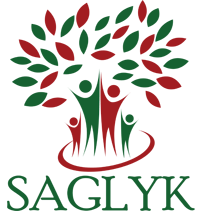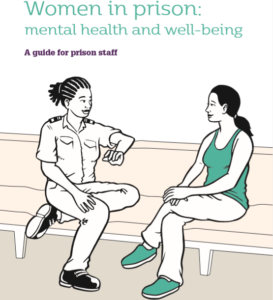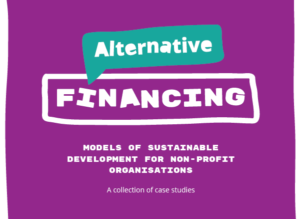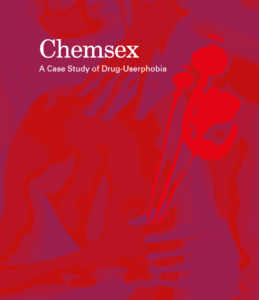Saglyk.org is the only website in Turkmenistan that provides credible public health information in the Turkmen language. Aynabat Yaylymova, the founder and the editor of the website, told us about the objectives of this initiative.
What was the main reason for launching the initiative Saglyk?
Our story started in 2009 when a few of my colleagues and I came across Where There is No Doctor by the Hesperian Foundation. It is a comprehensive community health guidebook with practical and important health information for an ordinary person. I realized that Turkmenistan did not have any basic health-related information available in the Turkmen language. I put together a team, fundraised and we translated and adapted Where There is No Doctor from English into the Turkmen language.
We had hoped to find international organizations with operations in Turkmenistan that would be willing to print and distribute it. But we quickly understood that it wasn’t possible, so instead, we made an online resource that could also be easily printed.
Today Saglyk.org (health in Turkmen) is the first and only platform that provides clear and credible public health information in the Turkmen language. We stand for informed disсussion on issues concerning healthy families, community, and the environment. These values are reflected in our logo .
Over the last eight years, we have developed about 2,000 articles on various health-related topics affecting individuals’ and society’s health. We focus on disease prevention. The main goal of our work is to address the low health literacy and to help people to take charge of their health and the health of their family members in Turkmenistan.
Which of your projects are the most valuable for you?
You can find a wealth of information at Saglyk’s website on various health topics. One of the areas of particular interest and value to us and our readers are our articles and Q&As relating to sexual and reproductive health. Simply put, Saglyk.org is the only website where Turkmen speakers can access medically correct, unbiased information about many culturally taboo topics in their native language. Our work on developing and normalizing language around human sexuality and family planning is the biggest value to my colleagues and me. We believe this work directly impacts Turkmens’ understanding of gender equality in our society. A lot of stereotypes stem from the ignorance of basic biology, anatomy, and physiology. We are trying to address these issues and the gap in the knowledge of young Turkmens.
Sometimes people from Turkmenistan say that in the country there is not enough credible information about health and prevention, some problems are not discussed at all. Is it true?
It depends. People living in large cities can find a wealth of information in the Russian language about health and prevention from Russian health websites. In general, health literacy is low, and the concept of prevention is weak in Turkmenistan. Information in the Turkmen language is not user-friendly and is not well communicated to the public.
Also, people think that it’s not “cool” to take care of your health and become knowledgeable about health. This is the attitude we are trying to change at least among the youth.
A lot of young people do not speak and comprehend Russian anymore in Turkmenistan. That’s why there is an urgent need to make modern educational information available in the Turkmen language. And yes, there are a lot of taboo topics in our society and some problems are not discussed and that silence stems from either ignorance or fear or at times both.
What are the most critical health issues today in Turkmenistan?
There is increased mortality from non-communicable diseases. One of the critical issues that almost every Turkmen witnesses is a rise in the number of cancer patients in the country. It looks like the mortality from cancer-related diseases is increasing. There are a lot of incidences of breast cancer and ovarian cancer among the population. This has brought on a rise in medical tourism. People go abroad to treat all sorts of medical conditions. The public’s confidence in the available treatment in the country of life-threatening conditions is low. While there aren’t statistics, from the stories we’ve heard, it looks as if cancer is the number one reason. Everyone seems to have a story of a relative or family member having cancer. Personal fundraising campaigns for treatment are becoming a new norm on social media.
Visually one can see an onset of conditions that go hand in hand with poor diet such as obesity and also micronutrient deficiency due to lack of information and difficulty accessing nutritious food. A poor diet based increasingly on processed foods, as well as a traditional cuisine rich in fats, coupled with decreased physical activity contribute to chronic conditions such as diabetes, strokes, and heart disease.
It is not clear if there are any improvements in high maternal and child mortality rates. It would be useful to have regular public reporting by government authorities as international organizations are limited in their assessments. We are not just looking for problems but also for any reason to celebrate any achievements, just like in the countries of the region where Kyrgyzstan is working to decrease the number of maternal and child mortality. For now, international organizations show high rates for Turkmenistan.
One of the critical public health administration-related issues is the absence of statistics. We simply cannot have an informed and constructive discussion without measuring the data first. We live with the hope that the government will make some statistics available to the public, so we can start understanding the issues that affect each of us and our families.
Another challenge is the absence of the government’s cooperation with civil society groups like Saglyk. Our website is now one of the most widely read websites in Turkmen. This platform could allow us to better distribute essential health information. We would be interested in finding ways to work with the government in helping them identify key health intervention points to improve the health of Turkmens.
What was the most memorable project of Saglyk in the past? Why?
Every brochure, blog, caricature, and infographic at Saglyk is a memorable project that required constructive thinking and collaboration among Turkmen nationals. One of the latest projects is our analytical briefing on violence against women, girls and children in the Turkmen family. We have a lot of information on this topic at Saglyk.org but in this briefing we attempted to use the statistics that we gained by organizing online surveys and help readers to understand the complex societal impact of violence in the family that is often hidden from their eyes. A team of people who worked on this had very different, valuable skillsets but one shared vision – to make the future of our children free from domestic violence.
How does Turkmenistan oppose HIV/AIDS? How serious is the situation today?
We closely follow the reports by international organizations and unfortunately, we do not see any changes in national statistics regarding HIV/AIDS in Turkmenistan becoming public. This is unfortunate if you think of how many lives could have been saved and how many infections could have been prevented in Turkmenistan. It gives us some hope to learn that the governments of Kazakhstan and Kyrgyzstan accepted the problem and now do some interesting work on this with civil society in their countries. It is hard to judge the seriousness of the situation in the country with regard to HIV/AIDS. Obviously, the population does not accept the idea that HIV/AIDS does not concern Turkmens. It is just not possible to stay isolated considering the level of domestic and international migration in the country. We can say that younger people are better informed about the disease. One can hear occasionally that there are people with HIV but it is impossible to make any judgments about the seriousness of the disease rates. There are a lot of rumors, speculations, and silence that hurts people who might be suffering in isolation. Saglyk has developed a series of informational blogs on HIV/AIDS prevention. We know that teachers and doctors use this information in their work.
Donate to Saglyk – here.




